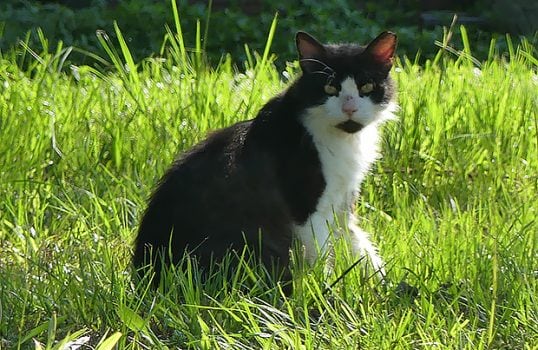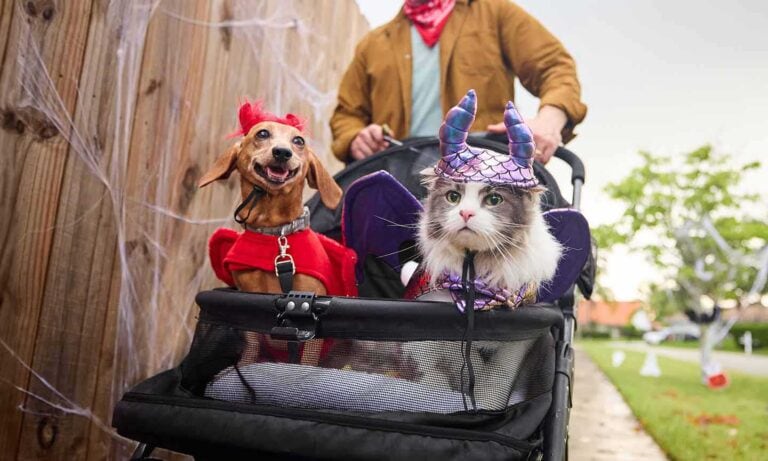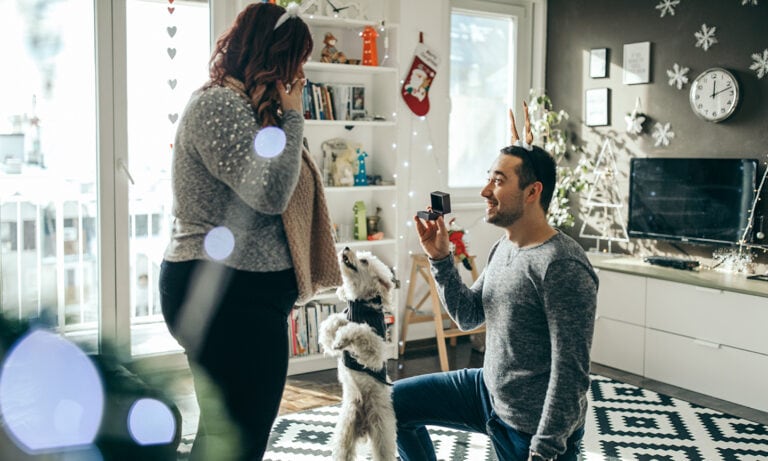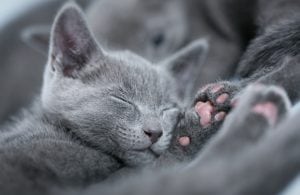Every feral cat colony has a “Tough Tom”—the big cat who rules the group and runs off new cats that are trying to snatch a bite of food in the colony territory. The one all the other cats fear. These colony kings serve a purpose in the sad life of a group of feral cats. If every dumped cat could join, there would not be enough to eat for the colony. It’s survival of the fittest.
Every time we fed “our” local colony, Garfield, the resident Tough Tom, would arch his back for a pet while most of the other cats skittered around, approaching the cat food while keeping a wary eye out that we didn’t get too close. Garfield would sometimes try to get in our car while we filled bowls.
“No, Garfield, we have too many cats and can’t take you home. Sorry,” my husband, Martin, and I would say when we drove off and left him with his colony.
Then one winter day, another “friend of the colony” called us with a problem. “Garfield’s hurt. He’s limping. Can you come get him just until the worst of the freeze is over?”
What else could we do? Martin drove over to get him while I prepared a place for him in our home. The temperature was dropping below freezing, so I couldn’t put him outside in one of the pens we’d set up for hurt feral cats. And I had two kittens in my office, the only safe, warm room with a door that shut off from the rest of the house. The kittens were tiny; Garfield was big and tough. But I had no choice. I put him in my office, knowing I would be listening for sounds of problems between Garfield and the kittens all night.
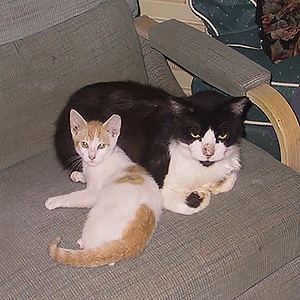
What happened next was a minor miracle. I slept through that night with no howls of distress while Garfield hid under the storage cabinet in the office until he felt safe. The kittens, Oreo and Cleo, romped and tussled. Both kittens were strays—Oreo was about 8 or 9 weeks old and Cleo was about 6 or 7 weeks old.
I also have several older female cats, all spayed. I tried to see if each of them would help care for Oreo and Cleo, but everyone hissed and clawed at the door as if the Hounds of Hell were after them instead of two tiny kittens.
So, imagine my surprise when I woke up and entered the office a few days after Garfield arrived to find the tough colony king grooming the two babies. They were climbing all over him and he seemed perfectly happy. And healthy. I checked to see if I could find any sign of the injured paw that had caused him to limp and earn his spot in the office. All paws seemed in fine working order. Either he had figured out to fake it or it had healed up fast.
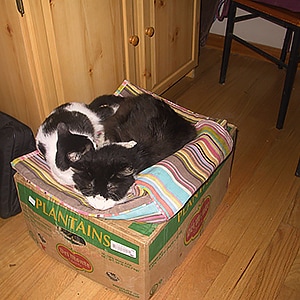
At night, he remained with the kittens and they all curled up together like one happy family. Garfield never scratched or struck at them no matter how they wrestled and climbed all over him. After a few more days, I started letting them have the run of the house.
My other cats regarded Garfield warily. He wasn’t above striking and growling at the other cats. And soon, all he had to do was look at them and they slunk away and gave him room. If he was eating, they all held back and waited until he finished. All except Cleo and Oreo. They just ran right over and stuck their little noses right in the dish in front of him. He backed up and let them eat.
When Oreo was about a year old (Cleo was unfortunately diagnosed with Feline Infectious Peritonitis, which is fatal, and was put down soon after), we trapped two kittens and several older cats from a park nearby. We planned to return them all to the colony, however, the kittens were tiny and the park was infested with wildlife, including alligators, foxes and hawks. We couldn’t put them back and, once again, Garfield took over parenting duties.
The tiniest kitten was a female tabby whom we named Queen Isabella (she soon earned the nickname of Hungry, however). The male was a lanky gold and white fellow we named Prince Harry. They bonded almost immediately with Garfield while Oreo struck out on her own, a teenager too sophisticated to bother with a little sibling.
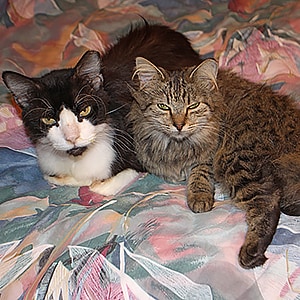
We never took in any more kittens, and about the time Harry and Hungry were grown we noticed that Garfield was losing weight. Our vet suggested a Feline Immunodeficiency Virus (FIV) test, which came back positive. We were stricken. Had he been in the colony, we would have considered putting him down, but after all he had done for the kittens, we couldn’t do it.
Now, four years later, Garfield is still with us. He is FIV positive and probably nearing his last days. We are making every day as good as we can for him.
As of today, Garfield is coping. He is not too active and spends his days sleeping in a cozy bottom shelf of a cabinet and getting up to use the litter box or eat. He is eating well and will always have his place here unless he is in pain or cannot function. Oreo, Hungry and Harry and are spending his final days giving him the same affection he showed them in their early days. His kittens love him dearly.

Kathleen Walls is a writer and author, usually about travel. She is also a cat lover and rescuer. Her own publication is American Roads and Global Highways.
Share:
